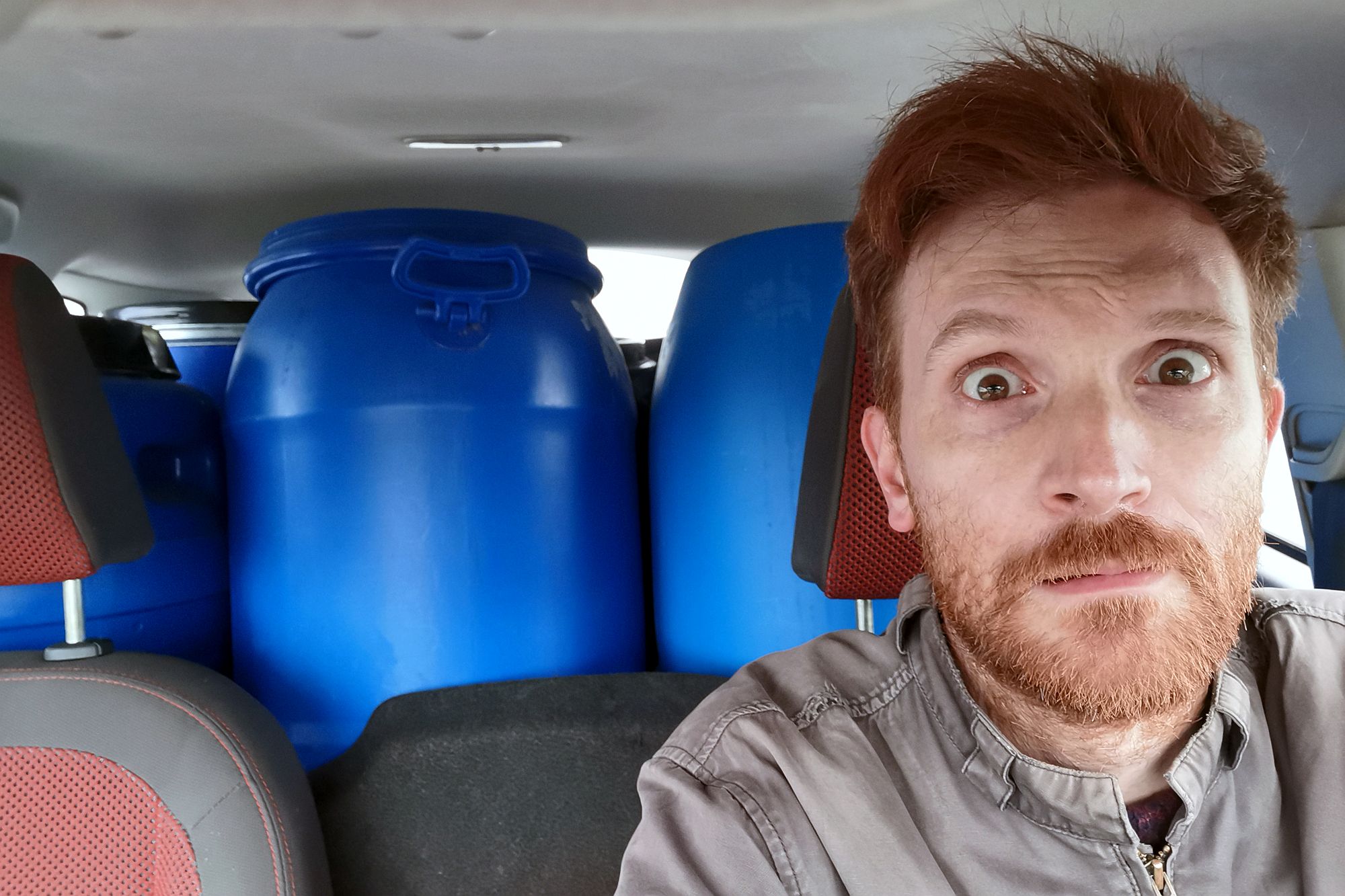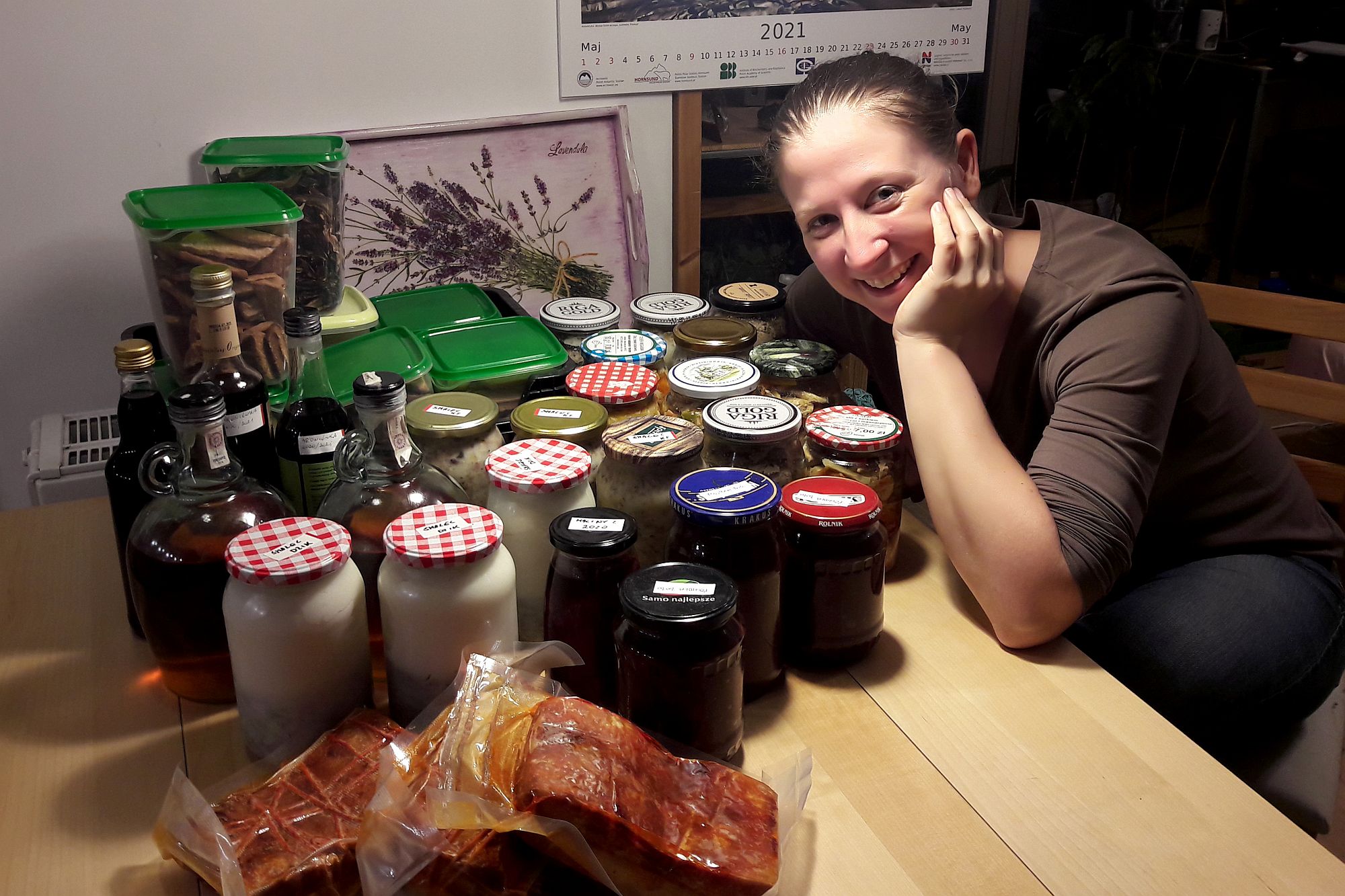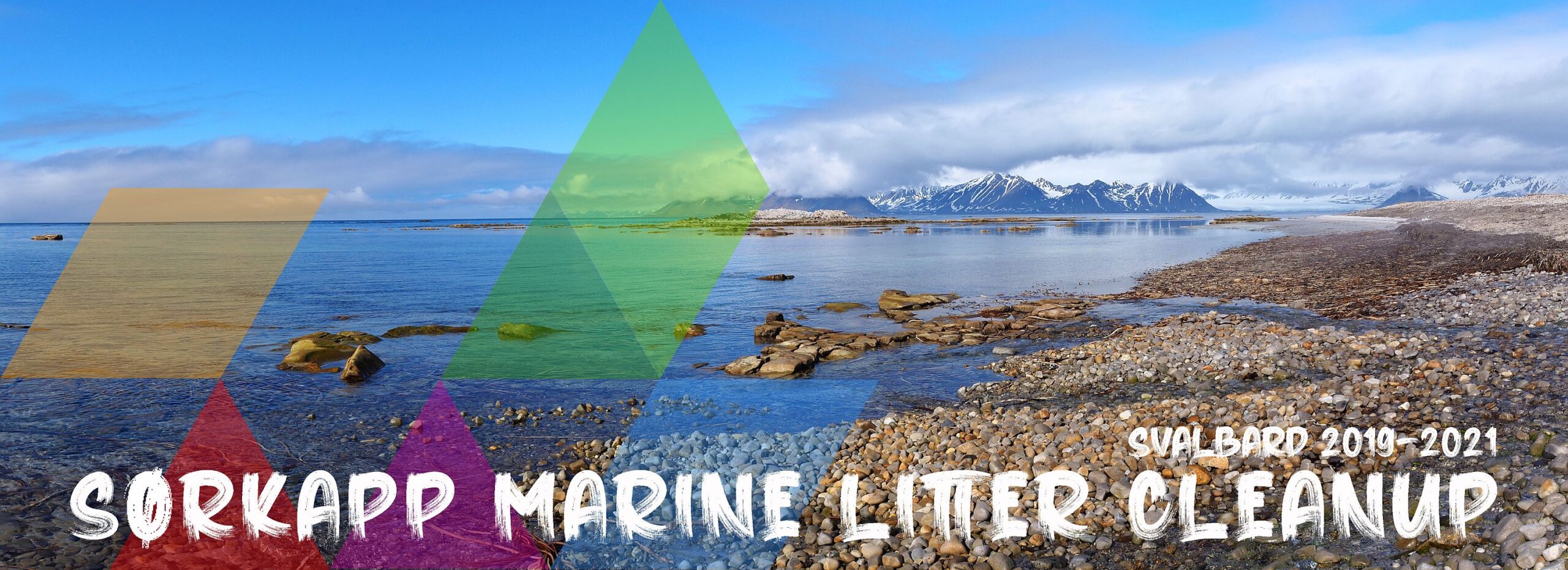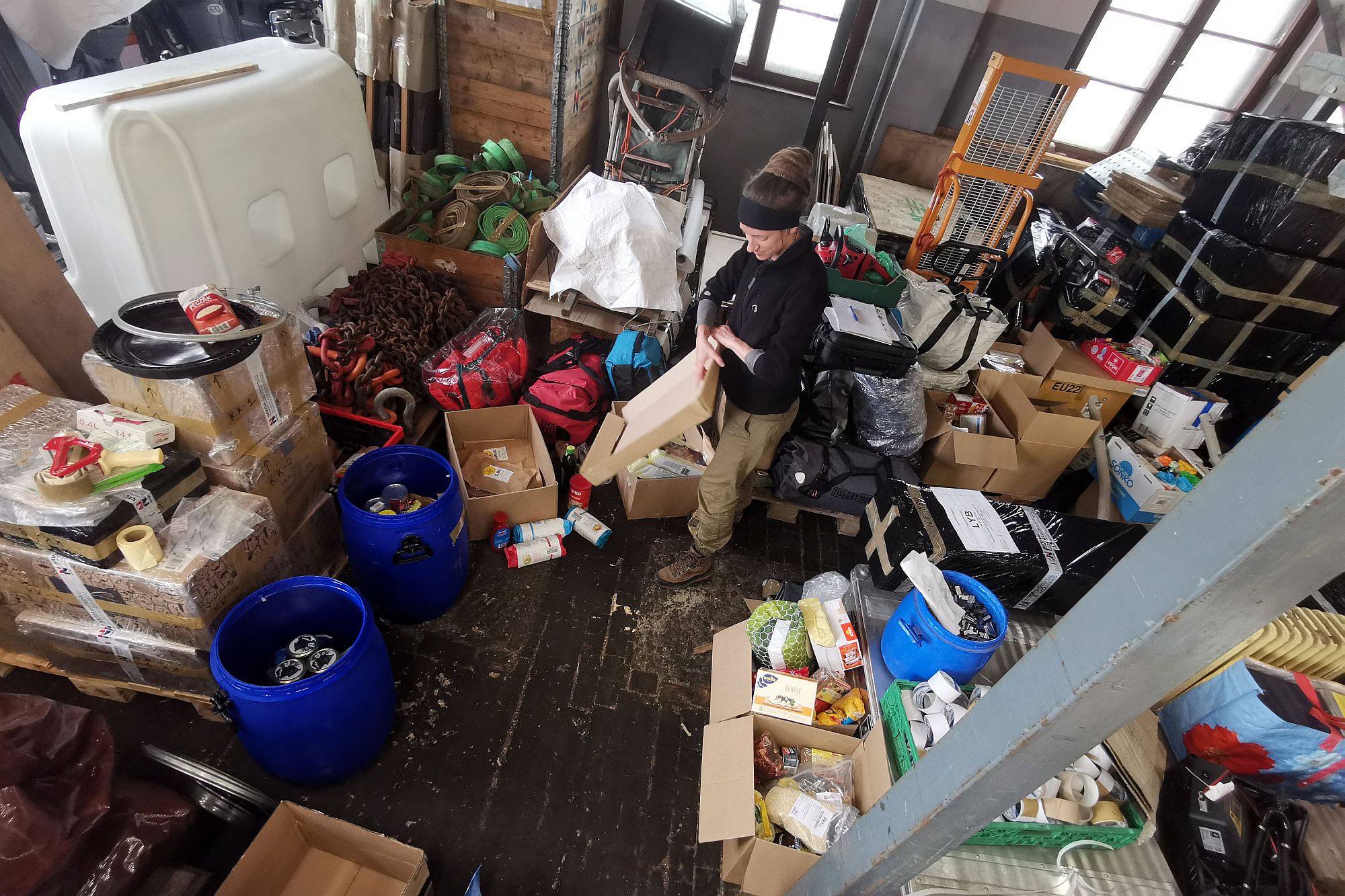So we’ve made it to Norway. Put up in pretty comfy rooms on the 12th floor of a quarantine hotel in the centre of Oslo, we’re just starting the third day of a mandatory 10-day quarantine.
We arrived in Oslo on Saturday and – armed with negative COVID test results, vaccination certificates, registration numbers, onward tickets and a whole bunch of support letters – we faced the Cerberus of Gardermoen Airport, or an (otherwise really friendly) official who was to decide the fate of Sørkapp Marine Litter Cleanup project. The letters, which we were especially proud of, he didn’t as much as look at. But they worked their magic anyway. And no wonder, because they were super-letters issued by an amazing group of well-wishers or, to be more specific, by:
- the Royal Norwegian Embassy in Warsaw
- the Embassy of the Republic of Poland in Oslo
- the Command of the Norwegian Coast Guard vessel KV Nordkapp
- the Management of the Polish Polar Station Hornsund
- Professor J. M. Węsławski from the Department of Marine Ecology at the Institute of Oceanology PAS
- Professor Wojciech J. Miloch from the Department of Physics at the University of Oslo
Getting this far, however, required much more than finding a group of well-wishers. Meticulous preparations took five months to complete and involved struggles and victories which featured prominently in our status updates on Facebook. Missed it? No worries! A compilation of the most interesting posts can be found below.
7 FEBRUARY 2021
Organizing a polar expedition during the pandemic is much like a game of twister with a contortionist. Without serious flexibility, a fair degree of bravado and single-minded determination you can’t even dream of victory. And although in the ongoing game the pandemic is still in the lead, we too have our moments of brilliance. Absolute brilliance, even! Like when we received an official declaration of assistance from the command of the Norwegian Coast Guard.
What does it mean in practice? If everything goes as planned, this year we’ll have no need to transport the litter to the other side of the fiord, so that several weeks later it can be picked up by the training-research vessel Horyzont II. We’ll have no need to engage the team of the Polish Polar Station Hornsund, who have their hands pretty full as it is. We’ll have no need to repack everything over and over, as what we can lift onto a boat ourselves is not quite the same as what Horyzont II hoists on board with a crane. What we will have instead is a few extra days for project fieldwork and a rare chance to fist-bump the crew of KV Nordkapp, who have helped us before.

It was with the help of KV Nordkapp that the largest piece of marine litter found by the forScience team during the first round of project fieldwork, or – to be more specific – a massive Russian hydroacoustic spy buoy from the Cold War era, finally made it to a scrapyard.
© Tore Strøm, CO KV Nordkapp
So if your holiday plan includes stirring up trouble within Norway’s territorial waters, do us a favour and skip that bit. The Norwegian Coast Guard has already got other plans.
12 FEBRUARY 2021
Not all things in Svalbard are cool. Take, for instance, prices. They’re far from cool, no matter what you buy. And so is the lack of trees. And the ban on keeping cats. What is cool, though, is the way in which Svalbard deals with litter collected during more or less spontaneous beach clean-ups. You bring the litter to Longyearbyen, make one phone call to the local waste management facility, and they take care of the rest. Nobody asks about money (or anything else, for that matter), because the cost of beach litter disposal is covered by Svalbard Environmental Protection Fund. The very same that pays for the execution of Sørkapp Marine Litter Cleanup project.
It may not seem like much, but it actually is brilliant. It means that all the compulsive litter-pickers, who come back from every stroll loaded with whatever the waves wash ashore, don’t need to worry what to do with it all. Especially if the litter harvest yields more than a couple bagfuls. For the lot we collected, a special container was put up in the port and – what’s just as important – taken away within hours.
Meanwhile in Poland, well, the prices are bearable, trees gorgeous and cats allowed, but the litter issue is clearly out of control. Fellow litterphobes complain that many local councils frown at grassroot clean-up initiatives, as they not only draw attention to a problem which is more convenient to ignore, but also cost money. And there’s no one willing to pay. Arranging a container (and someone to take it away afterwards) often verges on the impossible. It’s well frustrating and even more so when you know there are places where all you need is a single phone call.

The unloading of litter in Longyearbyen. Starring: a container provided by Longyearbyen lokalstyre, the training-research vessel Horyzont II with the crew, and nearly 3 tons of carefully sorted beach litter, collected as part of Sørkapp Marine Litter Cleanup project.
© Włodek Sielski
17 FEBRUARY 2021
An effective remedy for COVID worries that plague the forScience Foundation is not just chocolate, but also the fact that among the ranks of Sørkapp Marine Litter Cleanup supporters we can still find the Embassy of the Republic of Poland in Oslo and the Royal Norwegian Embassy in Warsaw, which both took us under their wing almost two years ago! The double honorary patronage we received back then remains valid. We’ve checked.
What does it give us? Something to be seriously proud of, an extra incentive to do our best and, most of all, a multifunctional key that opens many doors. Who knows, it might even help us get through closed Norwegian borders.
If you can’t quite recall the circumstances in which Sørkapp Marine Litter Cleanup project received the double patronage or wish to see how the plaque commemorating the event looks on the rotten wall of Kapp Horn Hytte, you’ll find it all in this post.
17 MARCH 2021
Remember how we told you that Svalbard is probably the best place to indulge in compulsive litter picking, as the local way of dealing with trash removed from Svalbard’s beaches is a model of utmost perfection? And how the key element of the mechanism is Svalbard Environmental Protection Fund, which covers all cost of beach litter disposal? Not even a week later, it turned out that Svalbard Environmental Protection Fund had withdrawn from the arrangement due to serious financial difficulties. Luckily, local authorities immediately stepped in and, before we even managed to exhaust the pool of vivid insults, which we hurled at the blasted virus (because the Fund’s difficulties did not come out of nowhere), the problem was neatly solved. This year the cost of beach litter disposal shall be covered by Norwegian Retailers’ Environment Fund. Where does it take the money in these crazy times? Well, this you can find out for yourself. All that matters for us is that beach litter pickers in Svalbard can still dispose of whatever they find in a way that’s quick, simple and effective.
13 APRIL 2021
In just three days the Foundation’s scout will complete a 10-day mandatory hotel quarantine in Oslo and reach the final stage of his “test journey” to Svalbard. How is the quarantine going? Slowly and the view from the hotel window leaves much to be desired, but on the whole it’s not too bad.

The view from the quarantine hotel window leaves much to be desired.
© Adam Nawrot, forScience Foundation
- Accommodation in a quarantine hotel is only 500 NOK per night – including full board! – which, for Norwegian standards, is extremely reasonable.
- During the quarantine, it’s perfectly okay to go outside and get some fresh air. And although you can only be away for two hours at a time, there seems to be no daily limit to the number of times you can actually do it… or at least our scout has not managed to reach it yet.
- The local forests are home not only to tremendous amounts of rubbish (not nice, Norway, not nice at all) but also a good few elks, which make interesting companions in times of isolation. Just keep in mind that if the elk you meet turns out to be a savage kamikaze beast, you run for your life but not to shops, restaurants or petrol stations, as these are out of bounds for people in quarantine.
For more up-to-date information on hotel quarantine in Norway and onward travel to Svalbard, visit SIOS website.
16 APRIL 2021
We made it! For the first time since 2019, the Foundation’s foot was set on Svalbard’s soil. And even though the visit has nothing to do with Sørkapp Marine Litter Cleanup, the news stirred up as much emotion as that of Perseverance landing on Mars! Why? Because we now know it’s possible. Despite the pandemic mess and forever changing requirements and restrictions, Svalbard is once again within our reach.
Will the project team manage to pull the trick off in June? It’s hard to tell, but – with our scout just now enjoying the last of Longyearbyen‘s winter – we finally have some solid grounds for optimism.
23 APRIL 2021
Sørkappland. Right there, on the other side of the fiord, in the shadow of ominous-looking Hohenlohe Mountain, stands the Awfully Rotten Cabin, which in six weeks’ time will become our headquarters and after working hours – home. We hoped to pop out there and check if it does indeed still stand where it used to, but our man in Hornsund is at the same time (or perhaps even most of all) a man of the Institute of Geophysics PAS, which means he’s got loads of other stuff to do first. Besides, soon after his arrival, there arrived a new supply of April sea ice, which clogged the fiord to the point where rubber boat trips are simply impossible. This means that the casual pre-expedition reconnaissance comes down to counting food cans and wood briquettes left over from the first round of fieldwork, which are patiently waiting for the project team’s return in the storehouse of the Polish Polar Station.

Sørkappland seen from the other side of Hornsund Fiord.
© Adam Nawrot, forScience Foundation
1 MAY 2021
During the first round of fieldwork in Svalbard, one of the key elements of our standard equipment was… rubbish bags! The ones we used were a random collection found in cupboards and drawers before we’d set out for the Arctic. Some of them performed better, some worse, all started to fall apart much sooner than expected. While patching up holes and fixing unravelling seams, we dreamt of better bags – of ideal bags! – designed specifically for missions like ours. What would such bags have to be like? Capacious, durable, comfortable to carry and, let’s be frank, at least minimally photogenic. This year, much to our delight, our bags will be exactly that!
A prototype was recently created by BB Kite Buggy, which is a team of sewing machine virtuosos specializing in kite production and repairs. And it’s not just any old kites we’re talking here, but jaw-dropping flying works of art, including power kites used in kite buggying and kitesurfing. In other words, unravelling seams are not likely to be an issue.
What gave us inspiration for the bag’s form? Have a guess! But the form is just part of it. Our awesome bags will be awesome because – in line with the Foundation’s anti-waste philosophy – they will be fashioned out of used up fertilizer sacks and discarded car seat belts.
The prototype has just been thoroughly tested in the bushes along the bank of the Vistula. It did really great! And the said bushes have clearly benefited too.

Rubbish bag prototype during field tests on the bank of the Vistula.
© Adam Nawrot, forScience Foundation
6 MAY 2021
Apart from rubbish bags, which we recently tested in the bushes along a nearby river, another key element of our team’s daily equipment is… somewhat bigger rubbish bags, known simply as big bags. For the first round of fieldwork we simply purchased a few dozen of them, which wasn’t the best thing to do, because even though, in normal circumstances, the bags could easily be used for several seasons, complicated transport logistics meant that most of them ended up utilized along with their content when they were still in perfect shape. This year, therefore, to minimise the amount of waste, we took a slightly different approach, which brings us back to the topic of used up fertilizer sacks, whose growing piles are a headache to many Polish farmers.
The easiest way to empty a fertilizer sack of its content is by slitting its bottom. This means that all you need to turn a worthless piece of plastic rubbish into fully functional expedition equipment is a heavy duty sewing machine and a certain set of skills. We don’t have either, but we do have BB Kite Buggy.
Do not assume, though, that being a pro makes you immune to “oops” situations. Like the moment after fixing the first slit bottom, when it turned out there is no way to put anything in the sack, as its top part is actually completely sealed. BB Kite Buggy, however, have emerged unscathed from worse trouble than that. The crisis was soon resolved, a proper hole cut and secured, and the end result heartily approved. The big bag production will soon be resumed, which is just as well, as the expedition starts in only 30 days!
12 MAY 2021
Fashioning rubbish bags out of material destined for the dump is not the only step we’re taking to minimize the amount of waste generated during Sørkapp Marine Litter Cleanup. The process of provisioning the expedition has also been radically changed. Has it made the task less of a challenge? Not at all. Trying to cut down on the amount of packaging means we must constantly be on our guard. We plan differently, buy differently and we’ll pack differently too. It would sure be easier and quicker to do it the standard way, but hey, isn’t there’s more to life than time-efficiency and convenience?
Thanks to Paweł, all supplies for this year’s round of fieldwork (and we won’t be travelling light) will make their way to Svalbard in second-hand plastic barrels which used to hold cosmetic ingredients. The barrels, which were soon to be disposed of and which we took over completely for free, are perfectly sized, water-tight and hard to crush (and, from our point of view at least, highly reusable). As a result, it is them – and not kilometres of bubble wrap, stretch foil and tape – that will protect our food for the hardships of the journey. So, even though the actual packing is still ahead of us, it seems like in this skirmish with single-use plastic it’s us who get the upper hand.

Paweł and his precious cargo.
© Paweł Lewandowski
26 MAY 2021
With only 10 days left until departure, we’re definitely turning up the heat. And so does Kasia, as she cooks and bakes to her heart’s content and our stomachs’ delight.
Kasia’s jars, boxes and packages will provide the team with enough energy – and enthusiasm – during the first few days in Sørkappland, when the amount of work makes it all but impossible to engage in any culinary activity which goes beyond pouring hot water into a bowl of instant noodles. But when we sort ourselves out, fill the cabin with over half a tonne of provisions and get the awfully rotten kitchen in working order, drop by for a cup of coffee. That’s the one thing that sure won’t run out before the end of the expedition.

Kasia’s jars, boxes and packages will provide the team with energy – and enthusiasm – during the first few days in Sørkappland.
© Katarzyna Filimonow
31 MAY 2021
After a rather hectic weekend among barrels, boxes and canisters, all equipment and supplies necessary for the execution of this year’s round of fieldwork in Svalbard (or, to put it more simply, expedition stuff) is ready to be loaded on board Horyzont II, which will soon set off for Hornsund.
We packed everything that was there to pack, from home-made cookies, through an impressive pile of rubbish bags, to a 5-meter rubber boat with an engine. It wasn’t easy, but the packing skills gained in childhood with the help of the best ever packing simulator (otherwise known as Tetris) once again proved invaluable.
1 JUNE 2021
Our expedition stuff includes, among others, an impressive bundle from Baltic House Poland – a company from Puck, which specializes in energy-efficient timber frame houses, or modern, high-quality and picture-perfect counterparts of the Awfully Rotten Cabin.
It was thanks to Baltic House Poland that, in 2019, we gave the cabin a makeover, which took a good few decades off its rotten frame. Our efforts, however, did not save it from inside snowdrifts, the sight of which made the Baltic House folk recoil in horror. Luckily, their enthusiasm for wooden houses goes way beyond their own fancy creations and – once again – they equipped us with a professional Arctic repair kit. What does it include?
- Seasoned wood for new window shutters
- solid hinges and bolts for the front door
- several rolls of tarred paper for the roof and the walls
- professional wood screw and other bits and pieces to hold it all together.
So hold tight, Awfully Rotten Cabin! Under the banner of Baltic House Poland and to the accompaniment of… well, a bunch of sounds, we’re coming to your rescue!
The anthem in honour of Baltic House Poland and the Awfully Rotten Cabin.
Film: Barbara Jóźwiak // Music: Adam Nawrot
What followed was airport goodbyes, a moment of dread caused by a sudden flight cancellation and… pretty comfy rooms on the 12th floor of a quarantine hotel in the centre of Oslo, mentioned at the very start of this account. What fate awaits the forScience team once the quarantine is over? We’ll find out soon enough. And you? You’ll have to wait until August, when we’re back to civilization with a fresh supply of expedition news.



